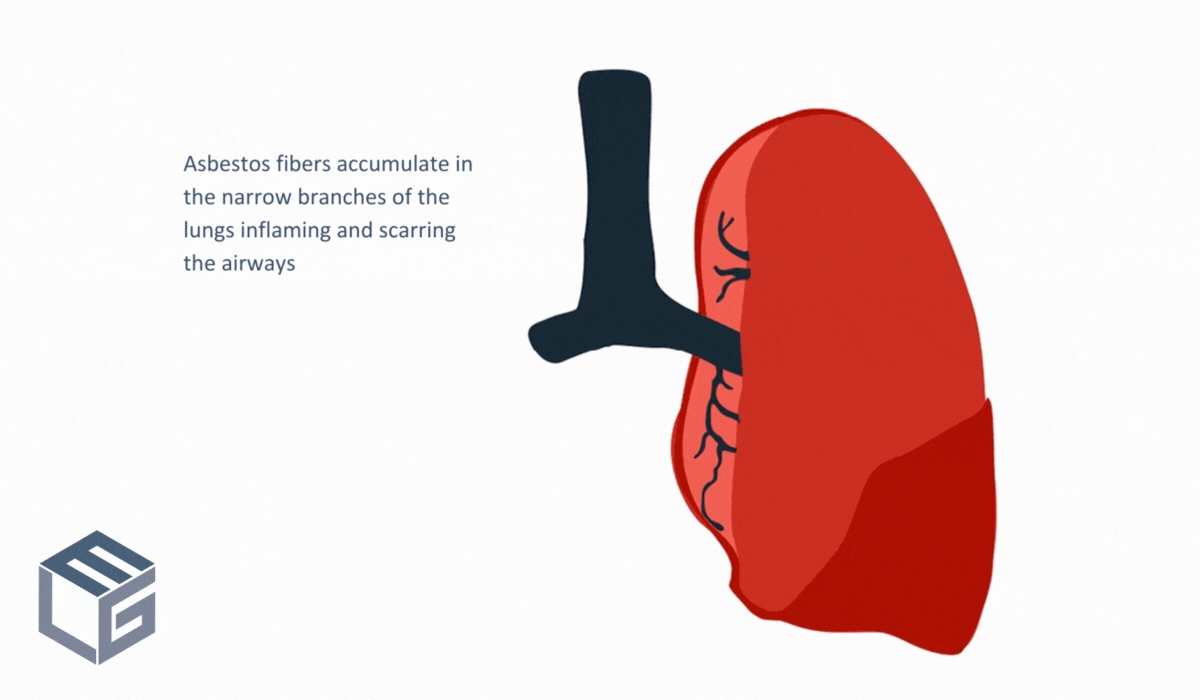Between 1999 and 2013, asbestosis was responsible for the death of over 20,000 Americans
While rare among the general population, asbestosis is a widespread disease among people with a history of workplace asbestos exposure. It is a form of pulmonary fibrosis, a condition that entails the scarring of the lung tissue, and it typically ensues within 10 to 20 years after the person was in contact with asbestos for the first time.
Inhalation is the only route of exposure, which may lead to asbestosis. The reason why the disease has such a long latency period resides in the way in which the asbestos fibers in the lungs cause damage to the organs.
Accordingly, shortly after inhalation, the asbestos fibers that attach themselves to tissue start producing increasingly severe inflammation and scarring, which will ultimately affect the lungs extensively. It is important to note that suffering from asbestosis makes you 10% more susceptible to developing lung cancer and pleural mesothelioma in the future. Pulmonary heart disease is another complication that can arise from asbestosis.
Unfortunately, asbestosis has no cure at the moment. The role of the existing treatment is to keep the disease under control and alleviate symptoms. Every year, more than 1,000 people in the U.S. lose their lives to asbestosis, the majority of whom were exposed to the carcinogen in the workplace before 1980. It is also worth noting that smokers with a history of heavy occupational asbestos exposure are substantially more likely to develop asbestosis and other related diseases than non-smokers who handled the hazardous mineral on the job. In addition to lung cancer and mesothelioma, asbestosis sufferers are also prone to malignant diseases such as colorectal cancer, since asbestos fibers can easily travel through the body via the bloodstream or the lymphatic system from the lungs to nearby or distant organs.
The most common symptoms of asbestosis, which are very similar to the signs of numerous other types of pulmonary disease, include:
- a lingering dry cough
- shortness of breath
- chest pain
- fatigue
- chest tightness
- a crackling sound when breathing
- loss of appetite
- nail clubbing
- unexplained weight loss
